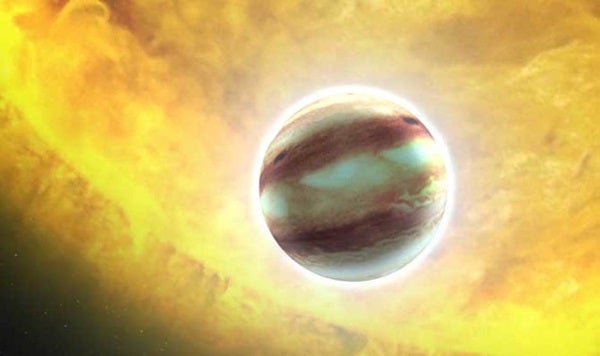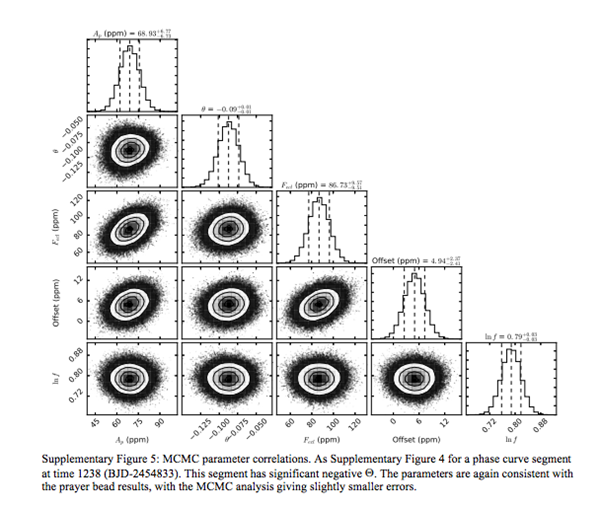The weather on sunny HAT-P-7b isn’t so great right now. It’s cloudy and 3,500 degrees Fahrenheit (1,927 degrees Celsius.)
But that we know this at all is rather revolutionary. That’s because we’ve only had the slightest whiff of planetary weather — and this is the first time we’ve directly observed it outside the solar system. The research was published today in Nature.
The planet is larger than Jupiter, and orbits its home star in a little more than two days. That places it as a hot Jupiter, a gas giant so close to its star that it orbits in Earth days rather than a period of months or years. The interaction between the massive planets and their home stars makes them some of the easiest to detect.
While HAT-P-7b was initially detected by the HATNet program at the Harvard-Smithsonian Center for Astrophysics, much of the follow-up observations of the planet came from the Kepler telescope.
Initial Kepler observations from the first four year campaign showed wild variability in the dimming of the parent star, HAT-P-7. Based on this data, a team led by David Armstrong at the University of Warwick were able to assemble a picture of winds whipping the intense heat of its parent star, which is larger than the Sun, to the night side of the planet distributing that heat globally instead of allowing for a hot “day” side and a cool “night” side.
The specific “smoking gun” was changes in brightness, indicating the influence of planetary-scale winds that speed up and slow down due to weather-like phenomena.
Follow-ups with the James Webb Space Telescope could give unprecedented glimpses into planetary weather — and based on what we know so far, HAT-P-7b could be an excellent candidate for follow-up observations.











